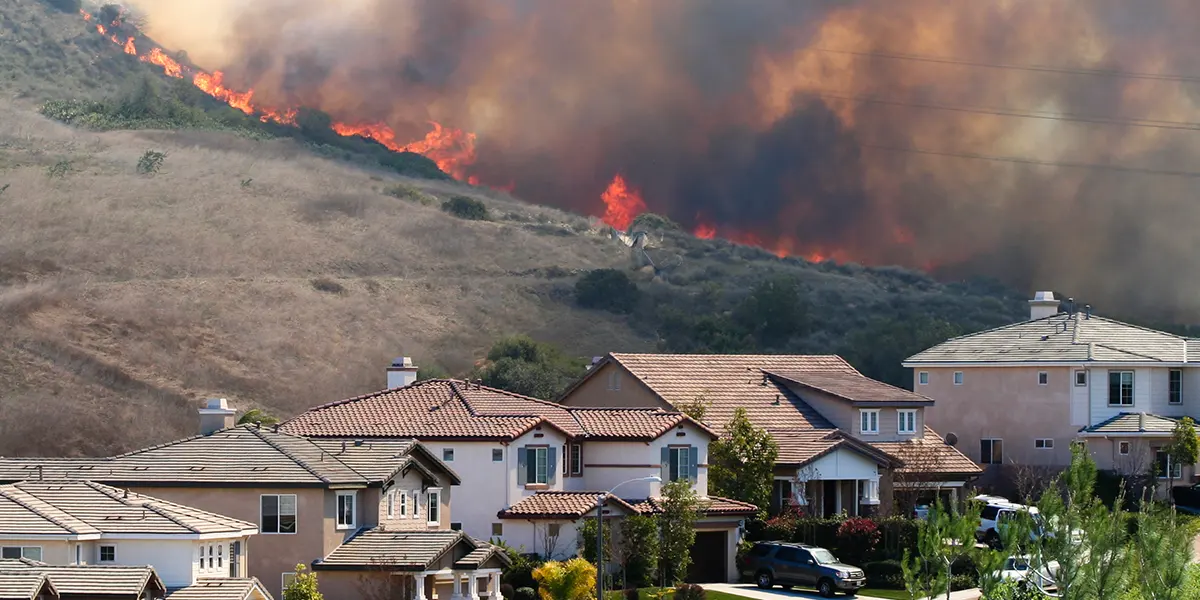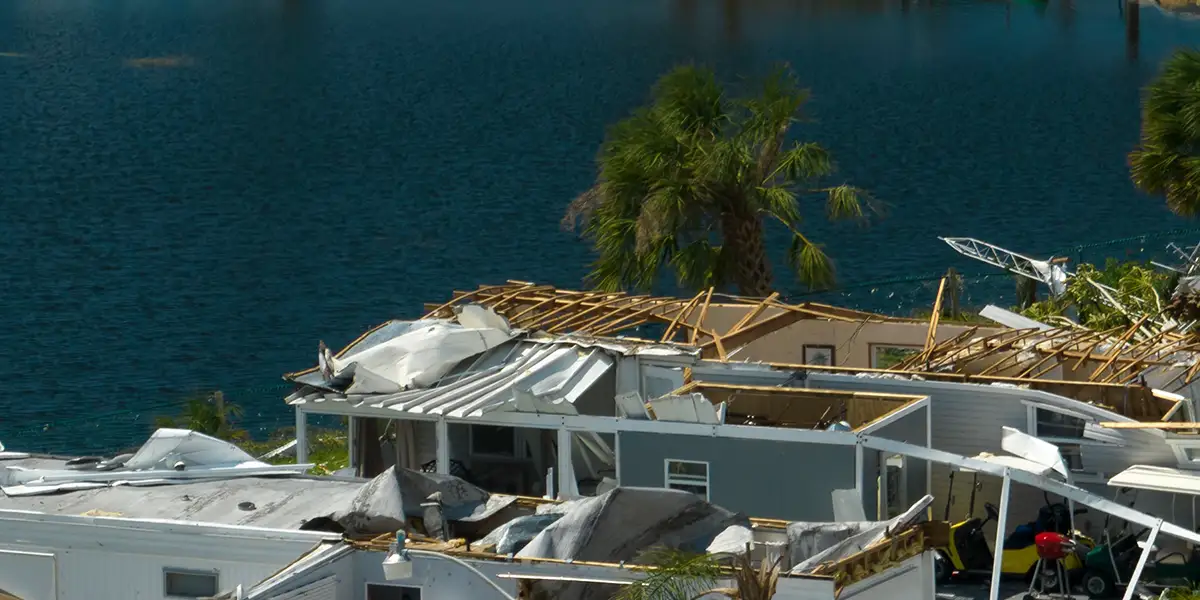The annual UN climate change conference meets in early November for the twenty-seventh time. This year’s focus includes adaptation and resilience. What is at stake, and what are the odds of COP27 achieving its goals?
While it is obvious that some effects of climate change cannot be stopped anymore, climate adaptation is often referred to as climate action’s blind spot. Meeting since 1995, the national delegations convened at UN climate conferences (known as COPs) have devoted most of their attention to the institutional arrangements to promote climate mitigation, i.e., the reduction of greenhouse gas emissions.
Indeed, last year’s COP26 in Glasgow saw quite some progress in the latter regard. The rules of the Paris Agreement, known as the Paris Rulebook, were agreed upon, paving the way for a global carbon market as well as fixing the transparency and progress reporting requirements. Moreover, the Glasgow Climate Pact asked all countries to come back with more ambitious plans for reducing emissions out to 2030 by the end of 2022. It also includes a commitment to end “inefficient” fossil fuel subsidies and “phase down” unabated coal — a phrase which became the fly in the ointment given it watered down the final text.
From "Together for implementation" to "Together for adaptation"?
COP27 will be held in the Egyptian resort town of Sharm el-Sheikh from 6th to 18th November 2022. Unlike previous conferences, this one is not targeting a single negotiated outcome but rather securing more action at the national level. Hence the Egyptian presidency's slogan for this year's event: "Together for implementation." Much of the talks will be centred on climate finance, mainly delivering on and fully mobilising the oft-cited sum of $100bn USD a year going from richer to the most vulnerable countries nations.
At the same time, COP26 agreed to earmark 40 per cent of that sum to adaptation finance from 2025. However, the Global Goal on Adaptation, established to increase the status of and financial flows towards adaptation activities, has so far been a rather overlooked aspect of the Paris Agreement. For these reasons, Mirek Dušek, Managing Director of the Global Programming Group at the World Economic Forum thinks it is fair to expect that the Egyptian presidency will "put an equal emphasis on adaptation".
Indeed, a look at the presidency's targets reveals a strong belief that "a transformative adaptation agenda is needed now." This is in tune with the findings by the Intergovernmental Panel on Climate Change (IPCC): In its landmark report "Impacts, Adaptation and Vulnerability," the chief climate science authority reckons that almost half of the world's population is "highly vulnerable" to the effects of climate change. In fact, people in highly exposed regions are already 15 times more likely to suffer death caused by floods, droughts, and storms, compared to those in regions with the lowest vulnerability. The current year has also done its part in deepening the trend.
An opportunity for businesses to step up to the plate
With adaptation so high on the agenda, this COP will be a perfect opportunity for businesses to show off more than "just" their emissions-reduction strategies. And while climate adaptation often brings to mind images of failed harvests, heat stress or water security crises, it is not just about food and water security. Building resilience through foresight should be considered just as important since it can guide investment in the right infrastructure that helps avoid the loss of people's lives and livelihoods. This becomes even more crucial in the current risk-off economic climate.
At any rate, adaptation will have to be driven by businesses and primarily take place at a local level. Professor Patrick Verkooijen, CEO of the Global Center on Adaptation (GCA), stresses the need to put "local actors at the center of decision-making and funding for" this part of climate action. For example, the Kenyan company APA Insurance, nominated for the GCA's Local Adaptation Champions Awards, provides coverage to approximately 1.4 million small-scale farmers and pastoralists using resources from NASA satellite imagery to Index-Based Livestock Insurance.
However, even larger and more established companies will be well advised to notch up their strategy. And some businesses already leverage their innovative capacity and reach for climate adaptation. Arcadis, a natural and built asset design and consultancy firm, works in partnership with UN-Habitat to improve the resilience of informal settlements and provides pro-bono technical assistance, especially in post-disaster recovery situations. Even food industry giants such as Danone show efforts to address water scarcity, soil fertility, or biodiversity.
Companies from developers to asset managers will, too, need to show action, as investors begin to mount pressure on how they plan to build resilience to a much warmer and more unpredictable world. The GCA estimates that the overall rate of return on investments in improved resilience is very high, with benefit-cost ratios ranging from 2:1 to 10:1. Investing $1.8 trillion globally could unlock benefits worth $7.1 trillion from now until 2030, with over half in the realm of resilient infrastructure.
From floating urban development or storm-proof housing, to heat-resistant materials and flood and drought management, actors in the infrastructure and built environment space urgently need a better view of the climate tech innovation they will require. Businesses will ultimately decide whether the climate conference’s boost for climate adaptation will be lasting. COP27 is the last call for them to make necessary preparations.
Even with a major step up in our levels of ambition to reduce greenhouse gas emissions, it is evident that we cannot avoid all the consequences of climate change. We need to adapt to rapidly changing climatic conditions, building the resilience of society."
How Climate X Helps Minimise Adaptation Risk Exposure
Developing adaptation measures starts with proper risk identification. Luckily, low-cost preparatory risk management actions can be taken to create a sound basis for future decisions. Climate X can help with that.
Spectra enables various organisations to become more resilient by quantifying risk, including adapting to the impact of climate change. Spectra allows organisations to capture the potential outcomes with climate stress testing and scenario analysis to accelerate strategic decisions that can be easily integrated into climate risk management and assessment reporting.
A rigorous approach to climate adaptation risks delivers greater net-positive outcomes for businesses. It enables companies to improve business operations and bolster competitiveness while boosting corporate branding. The time to integrate adaptation with mitigation efforts is now.
Sources
- https://www.climate-x.com/articles/industry/adaptation-climate-risks-blind-spot
- https://report.ipcc.ch/ar6wg2/pdf/IPCC_AR6_WGII_SummaryForPolicymakers.pdf
- https://unfccc.int/topics/adaptation-and-resilience/the-big-picture/new-elements-and-dimensions-of-adaptation-under-the-paris-agreement-article-7
- https://www.weforum.org/agenda/2022/09/cop27-emerging-markets-to-shape-climate-agenda/
- https://cop27.eg
- https://www.unep.org/news-and-stories/story/what-does-cop26-mean-adaptation
- https://gca.org/news/global-center-on-adaptation-launches-first-local-adaptation-champions-awards-in-the-build-up-to-cop-27/
- https://gca.org/reports/state-and-trends-in-adaptation-report-2021/
- https://gca.org/why-investing-in-resilience-is-good-for-business/
- https://www.bloomberg.com/news/articles/2021-11-17/why-investing-in-climate-adaptation-will-soon-be-very-profitable-green-insight
- https://www.economist.com/finance-and-economics/2021/07/24/the-private-sector-starts-to-invest-in-climate-adaptation
- https://www.gfanzero.com





